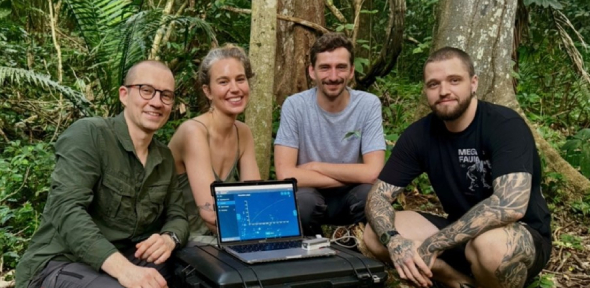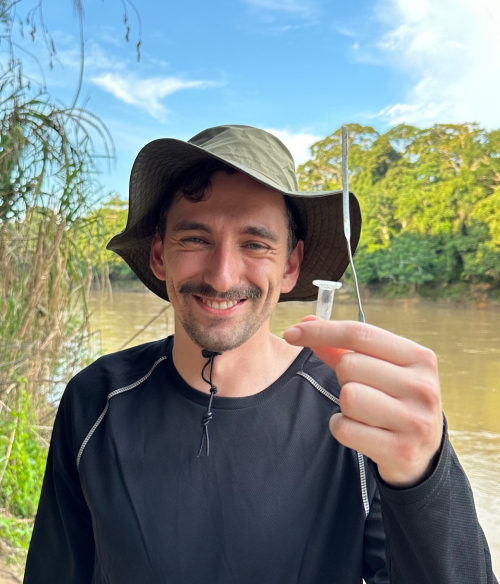
Submitted by S. Di Eleonora on Tue, 07/05/2024 - 12:28
Photo: Maximilian Gantz and Dr Timo Kohler with the directors of the Hoja Nueva Rescue and Research Center; Dr Samantha Zwicker and Dylan Singer.
Maximilian Gantz and Dr Timo Kohler from the Hollfelder lab at the Department of Biochemistry recently went on a field trip to Peru, to the Hoja Nueva Rescue and Research Center. The reserve covers over 3000 hectares of pristine Amazon rainforest also known as the Las Piedras. Using Oxford Nanopore sequencing, they investigated the microbial biodiversity of the Amazon rainforest, with special focus on the host-associated gut microbiome of ocelots and other ecological niches with high microbial biodiversity. This research intersects with conservation science carnivore re-wilding and enzyme discovery simultaneously aiming to conserve, investigate and utilize the genetic diversity found in the rainforest.
In his PhD research, Max is interested in the engineering and discovery of enzymes for biotechnological application to replace classical chemical catalysts in chemical industry. Enzymes for a range of different reactions have already been identified and are already applied in green chemistry applications but there is still an urgent need to discover novel functional biocatalysts. He is interested in identifying novel enzymes in the diverse microbiome that can be found in the Amazon: The most biodiverse environment on the planet.View from the Hoja Nueva research station
A huge Shihuahuaco tree that can grow for >1000 years and is a preferred target for illegal logging




